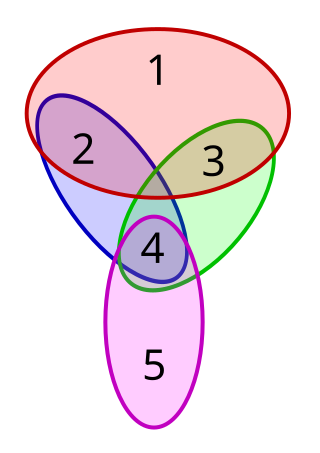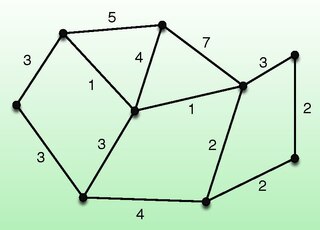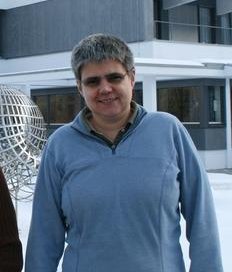Related Research Articles

A greedy algorithm is any algorithm that follows the problem-solving heuristic of making the locally optimal choice at each stage. In many problems, a greedy strategy does not produce an optimal solution, but a greedy heuristic can yield locally optimal solutions that approximate a globally optimal solution in a reasonable amount of time.

Combinatorial optimization is a subfield of mathematical optimization that consists of finding an optimal object from a finite set of objects, where the set of feasible solutions is discrete or can be reduced to a discrete set. Typical combinatorial optimization problems are the travelling salesman problem ("TSP"), the minimum spanning tree problem ("MST"), and the knapsack problem. In many such problems, such as the ones previously mentioned, exhaustive search is not tractable, and so specialized algorithms that quickly rule out large parts of the search space or approximation algorithms must be resorted to instead.

In combinatorial mathematics, the Steiner tree problem, or minimum Steiner tree problem, named after Jakob Steiner, is an umbrella term for a class of problems in combinatorial optimization. While Steiner tree problems may be formulated in a number of settings, they all require an optimal interconnect for a given set of objects and a predefined objective function. One well-known variant, which is often used synonymously with the term Steiner tree problem, is the Steiner tree problem in graphs. Given an undirected graph with non-negative edge weights and a subset of vertices, usually referred to as terminals, the Steiner tree problem in graphs requires a tree of minimum weight that contains all terminals and minimizes the total weight of its edges. Further well-known variants are the Euclidean Steiner tree problem and the rectilinear minimum Steiner tree problem.

In graph theory, a vertex cover of a graph is a set of vertices that includes at least one endpoint of every edge of the graph.
In computer science and operations research, approximation algorithms are efficient algorithms that find approximate solutions to optimization problems with provable guarantees on the distance of the returned solution to the optimal one. Approximation algorithms naturally arise in the field of theoretical computer science as a consequence of the widely believed P ≠ NP conjecture. Under this conjecture, a wide class of optimization problems cannot be solved exactly in polynomial time. The field of approximation algorithms, therefore, tries to understand how closely it is possible to approximate optimal solutions to such problems in polynomial time. In an overwhelming majority of the cases, the guarantee of such algorithms is a multiplicative one expressed as an approximation ratio or approximation factor i.e., the optimal solution is always guaranteed to be within a (predetermined) multiplicative factor of the returned solution. However, there are also many approximation algorithms that provide an additive guarantee on the quality of the returned solution. A notable example of an approximation algorithm that provides both is the classic approximation algorithm of Lenstra, Shmoys and Tardos for scheduling on unrelated parallel machines.

The set cover problem is a classical question in combinatorics, computer science, operations research, and complexity theory.

A Euclidean minimum spanning tree of a finite set of points in the Euclidean plane or higher-dimensional Euclidean space connects the points by a system of line segments with the points as endpoints, minimizing the total length of the segments. In it, any two points can reach each other along a path through the line segments. It can be found as the minimum spanning tree of a complete graph with the points as vertices and the Euclidean distances between points as edge weights.

The k-minimum spanning tree problem, studied in theoretical computer science, asks for a tree of minimum cost that has exactly k vertices and forms a subgraph of a larger graph. It is also called the k-MST or edge-weighted k-cardinality tree. Finding this tree is NP-hard, but it can be approximated to within a constant approximation ratio in polynomial time.

Jill Ellen Stein is an American physician, activist, and politician. She was the Green Party's nominee for president of the United States in the 2012 and 2016 elections and the Green-Rainbow Party's candidate for governor of Massachusetts in 2002 and 2010. She is currently running for president in the 2024 United States presidential election.

Vojtěch Jarník was a Czech mathematician. He worked for many years as a professor and administrator at Charles University, and helped found the Czechoslovak Academy of Sciences. He is the namesake of Jarník's algorithm for minimum spanning trees.
In graph theory, a cut is a partition of the vertices of a graph into two disjoint subsets. Any cut determines a cut-set, the set of edges that have one endpoint in each subset of the partition. These edges are said to cross the cut. In a connected graph, each cut-set determines a unique cut, and in some cases cuts are identified with their cut-sets rather than with their vertex partitions.

Clifford Seth Stein, a computer scientist, is a professor of industrial engineering and operations research at Columbia University in New York, NY, where he also holds an appointment in the Department of Computer Science. Stein is chair of the Industrial Engineering and Operations Research Department at Columbia University. Prior to joining Columbia, Stein was a professor at Dartmouth College in New Hampshire.

Introduction to Algorithms is a book on computer programming by Thomas H. Cormen, Charles E. Leiserson, Ronald L. Rivest, and Clifford Stein. The book has been widely used as the textbook for algorithms courses at many universities and is commonly cited as a reference for algorithms in published papers, with over 10,000 citations documented on CiteSeerX, and over 67,000 citation on Google Scholar as of 2023. The book sold half a million copies during its first 20 years, and surpassed a million copies sold in 2022. Its fame has led to the common use of the abbreviation "CLRS", or, in the first edition, "CLR".
Charles Max Stein was an American mathematical statistician and professor of statistics at Stanford University.
In the mathematical field of graph theory, an instance of the Steiner tree problem is said to be quasi-bipartite if the non-terminal vertices in G form an independent set, i.e. if every edge is incident on at least one terminal. This generalizes the concept of a bipartite graph: if G is bipartite, and R is the set of vertices on one side of the bipartition, the set R is automatically independent.
Louis Chen Hsiao Yun is emeritus professor at the National University of Singapore.
In graph theory, the graph bandwidth problem is to label the n vertices vi of a graph G with distinct integers so that the quantity is minimized . The problem may be visualized as placing the vertices of a graph at distinct integer points along the x-axis so that the length of the longest edge is minimized. Such placement is called linear graph arrangement, linear graph layout or linear graph placement.

James Nollner "Stein" Stone Sr. was an American football and basketball player and coach. "Stein" is the German for stone.

Angelika Steger is a mathematician and computer scientist whose research interests include graph theory, randomized algorithms, and approximation algorithms. She is a professor at ETH Zurich.

Philip N. Klein is an American computer scientist and professor at Brown University. His research focuses on algorithms for optimization problems in graphs.
References
- ↑ "Improved Steiner Tree Approximation in Graphs". 2000. pp. 770–779. CiteSeerX 10.1.1.42.2446 .
- ↑ "Alexander Zelikovsky" . Retrieved August 6, 2016.
- ↑ "Zelikovsky, Alexander". worldcat.org. Retrieved August 6, 2016.